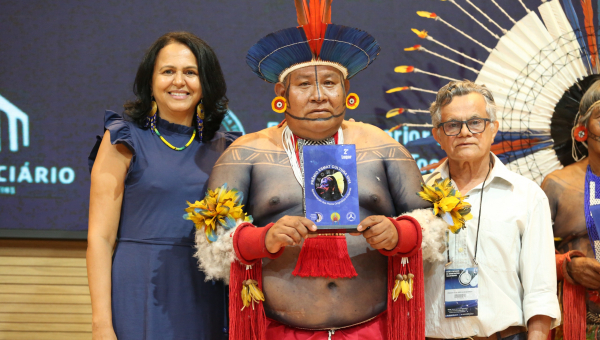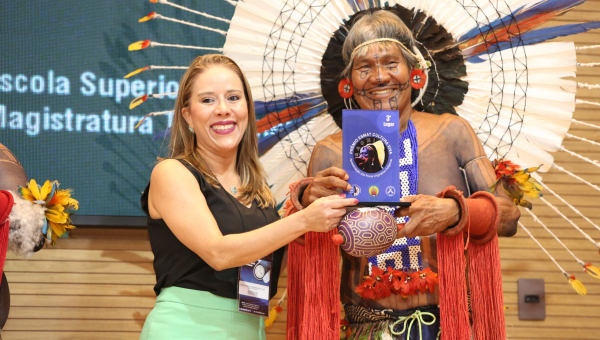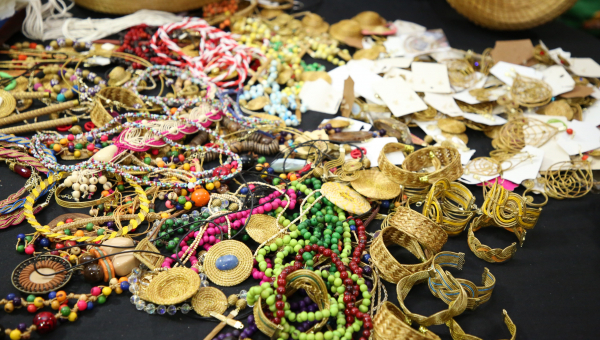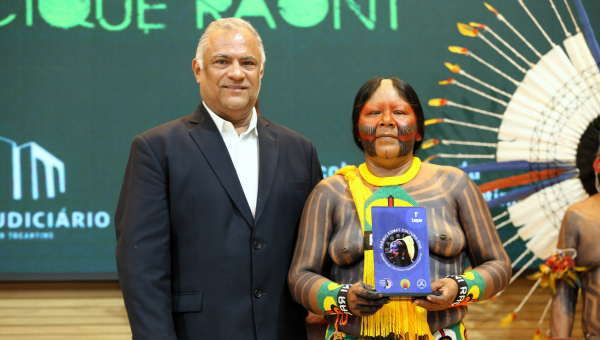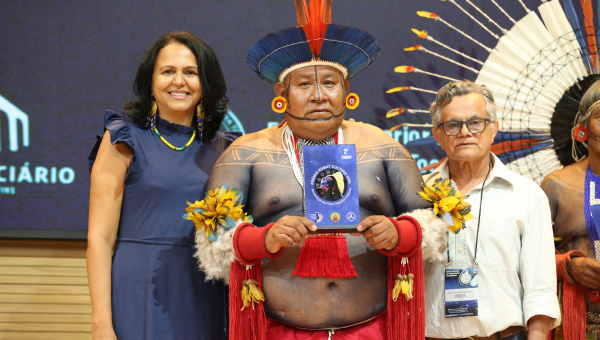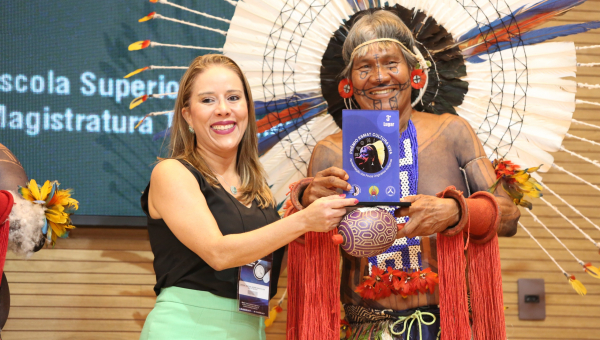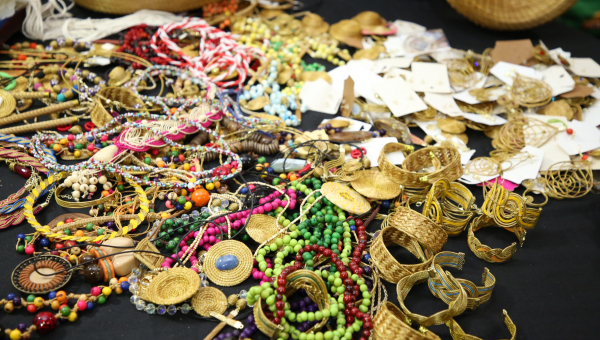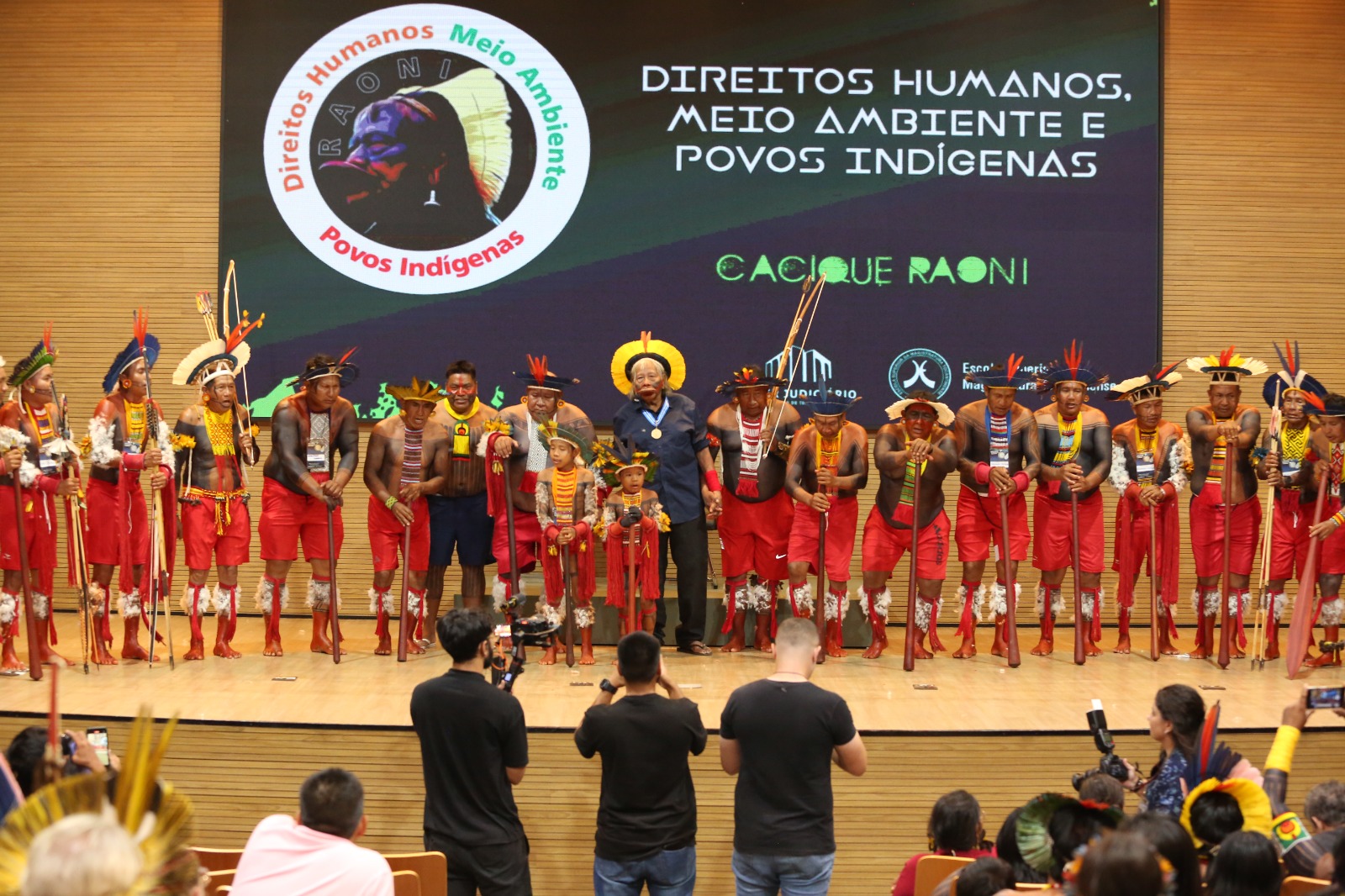
The powerful song of Mother Nature echoed in the auditorium of the Court of Justice of the State of Tocantins (TJTO) and vibrated in the hearts of the participants in the lecture on "Human Rights, Environment and Indigenous Peoples", with renowned indigenous leader Chief Raoni, on Tuesday afternoon (May 21st).
Sounds, rhythms, colors, adornments, ornaments and textures marked the presentation of the six indigenous peoples who took to the stage under the watchful eye of Chief Raoni. Caiapó, Xerente, Javaé, Krahô, Karajá, Tapirapé were the peoples who came from the States of Mato Grosso, Pará and Tocantins, not only to listen to the elder, but also to show a little of their ancestral culture.
It was just after 12:30 p.m. when the bus from the city of Confresa (MT) parked in front of the Court of Justice, bringing the Tapirapé people. They were the first to arrive at the event and the last to perform. But for those who waited, it was worth it. Those who were there received a real lesson in brotherhood and respect during their performance.

"We've had friction in the past, but not anymore. That's why I want to sing a song here that we sing and that the caiapós also sing", said the leader and dance coordinator, Reginaldo Tapirapé, inviting the chief Raoni and his son, the translator Paxton, to sing together in one voice. At the end, Chief Raoni was again presented with an indigenous borduna.
Opening the cultural showcase, the female voice set the tone and rocked the presentation of the Caiapó people. The first indigenous nation to perform brought out the strength of the warriors of their people through their imposing shouts, while also carrying handmade artifacts similar to hunting tools.
Under the marked sound of the maraca (musical instrument), the Xerente people performed in communion, men and women united. The women drew attention with their costumes made from buriti (a regional tree) straw. Next it came the Javaé people, who drew attention with the beauty of their costumes. In addition to the vibrant colors of red, their bodies were painted with the white of cotton.
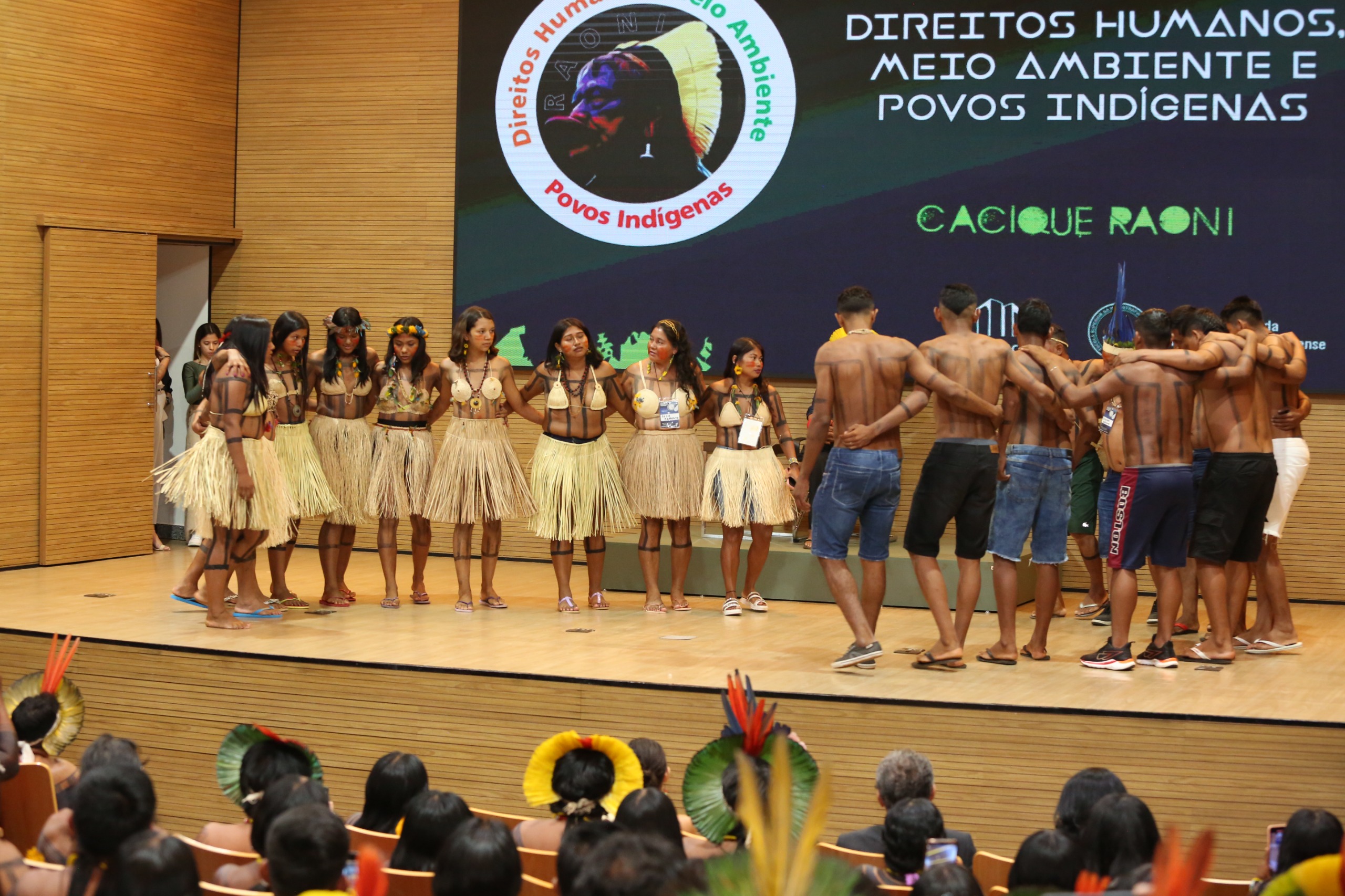
Maraca (musical instrument), whistle and clapping. A show full of markings. That's how the Krahô people performed. The Karajás, meanwhile, stood out with their traditional chief Yraru Karajá, who not only led his people with a maraca, wearing a huge headdress, but also presented chief Raoni with a borduna - a kind of compact, cylindrical indigenous weapon.
"Raoni with Drums of Tocantins"
Authored by the composer, Márcio Bello, the Master of the Drums, following the presentation with the young members of the Drums of Tocantins, gave an emotional speech and, after asking the chief Raoni for his blessing, presented him with the song that was presented here, "Raoni with Drums of Tocantins".
"I'm very honored and grateful for this moment. We were presenting at Rio +20 when you passed by, danced, blessed my work, said a few things to me in your native language and left. And when you left, I asked one of the warriors what had happened and he said that it had been a blessing, to my work, to me, to the drums, and that you had enjoyed it very much. So I made this song that speaks of your strength, your struggle, and you can use the song in any way you want, in your campaigns, and we authorize it and it's free."
Handicraft
Earrings, necklaces, hair clips, bookmarks and several other items. All made from golden grass and seeds such as açaí and others. This was an opportunity for Artisan Elisabete Xerente, who was there with her husband, Geraldo Alex, not only to attend the lecture, but also to do business.
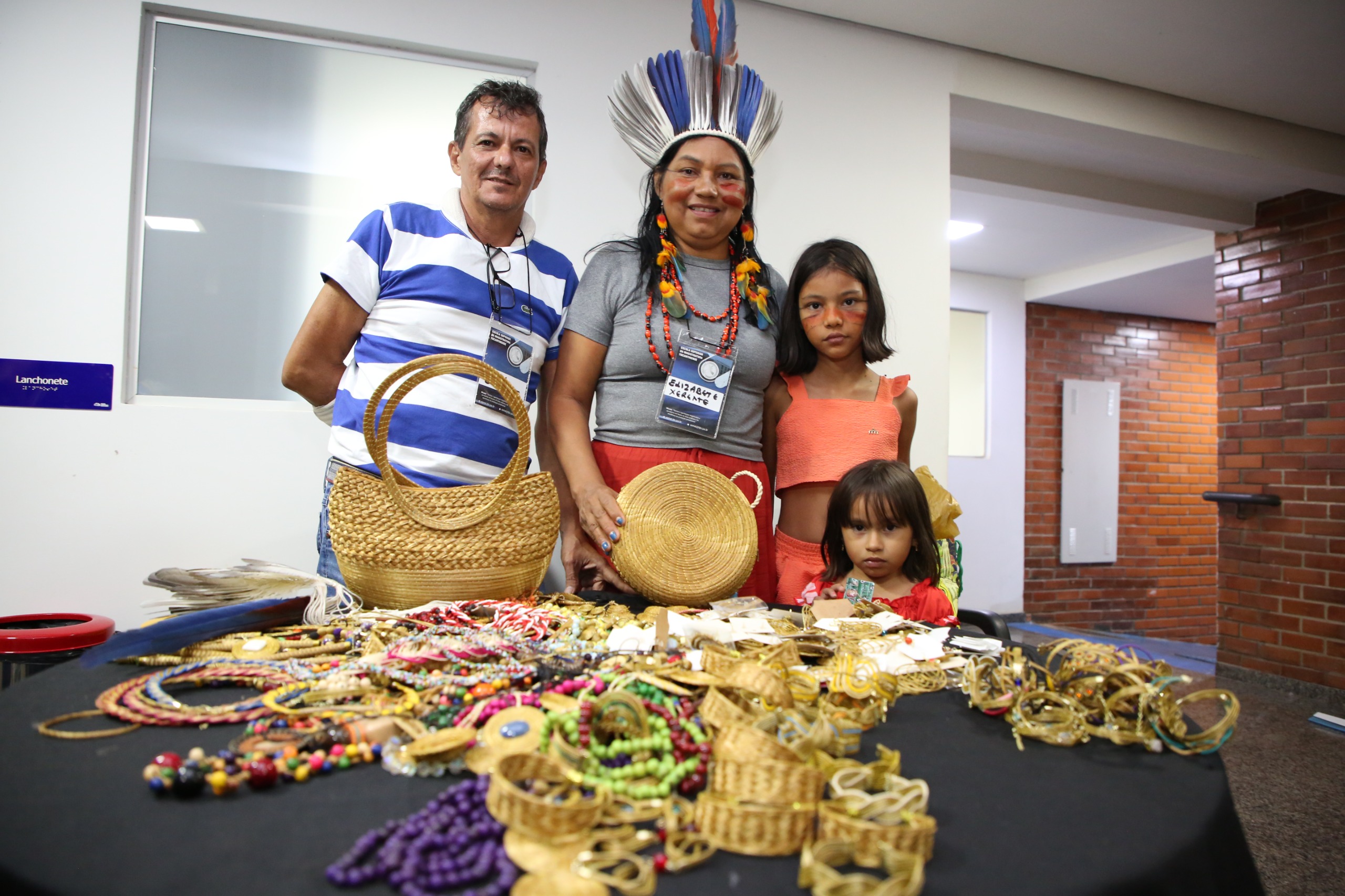
"I really liked the talk by the elder, who is Chief Raoni. My father was like that, an elder who fought for his land, his people and his culture. And the handicrafts we have today are our survival, from where we make a living for our people and, as the chief said today, we have to maintain our tradition, that's why I'm passing them on to my children and grandchildren."
Closer to God
Baptized in 2004 in the Krahô ethnic group, where he received the name Pyhhy (Urucum Seed), Photographer, Poet and Musician Emerson Silva, who has been working with indigenous photography for 20 years, was at the site to ask the chief for his blessing.
"Being with Chief Raoni means being with a greater entity, a greater force, it means being closer to God! We know his struggle, what he represents for the whole struggle, not just for the indigenous peoples, but for the environment. And as far as my work is concerned, I've been working with indigenous peoples across the State for 20 years and seeing everyone together, singing, bringing this culture is very special. It's not every day that we have this opportunity to see so many ethnic groups together, celebrating and paying homage to Raoni. A historic day for the State," said Emerson.
Esmat Living Culture Award
Chief Raoni stressed the importance of keeping the traditions of the indigenous peoples alive. "We need to maintain the tradition, the culture of our people and, from what I can see, the Tapirapé people still have a very strong culture," he said.





